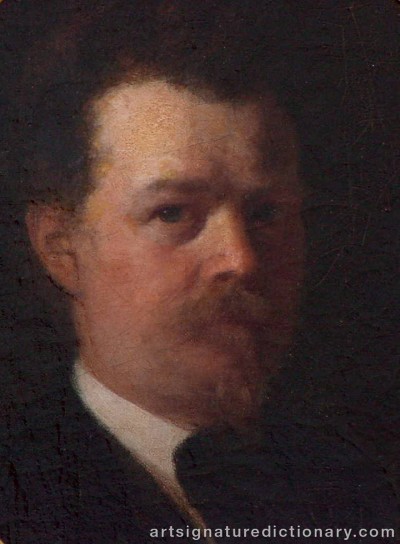
Charles Loring ELLIOTT
1812–1868, USA
Biography
Discover the life and artistic journey of Charles Loring ELLIOTT (born 1812, USA, died 1868, USA), including key biographical details that provide essential context for signature authentication and artwork verification. Understanding an artist's background, artistic periods, and career timeline is crucial for distinguishing authentic signatures from forgeries.
Charles Loring Elliott was born in Scipio, New York in 1812. He became one of the leading mid-19th century portrait painters, known for strong, unembellished work that focused only on the personality and character of the sitter. It was said that his style was perfect for his time when society admired the self-made man.
As a youth, he was discouraged by his architect father from studying art, so he worked in a store until his father relented and sent him to New York around 1829 or 1830 to study with portraitists John Quidor and John Trumbull. Lacking early success, he did some illustration and then spent ten years sharpening his skills as an itinerant portrait painter throughout the Northeast.
During the following decade, Elliot refined his style, notably for his avoidance of flattery or decoration of any kind. Typically, he posed his subject before a neutral background, in a traditional bust or full-length formula. Almost ruthlessly, the artist deleted any detail that might distract the viewer from an exclusive concentration on the character of the sitter. Despite the severity of his technique, Elliot excelled in the portrayal of individual character, especially in the case of charismatic individuals. His method was ideally suited to the temperament of the nineteenth-century America, with its emphasis on the personal achievement of the self-made man.
In 1839, he opened a studio in New York City and achieved immediate acceptance, painting portraits of many persons of political, academic, literary, and fine art prominence. His subjects included William Cullen Bryant, Henry Wadsworth Longfellow, Cyrus McCormick, and James Fenimore Cooper.
A major influence on his work during this period was portraitist Henry Inman whom he met in 1844 and also the new art of photography whose realism he strove to depict in his portraits. In 1845 he was elected an associate of the National Academy of Design, where he exhibited frequently. After Inman's death in 1846, he was the most prominent portrait painter in New York. In 1847, he was made a full Academician of the National Academy of Design.
He was known to have exhibited at the National Academy of Design throughout his life until his death, at the Brooklyn Art Association 1862-1872, and at the Pennsylvania Academy of Fine Arts 1863. His work is represented at over 25 major art museums including the National Academy of Design Museum, the National Gallery of Art, the Metropolitan Museum of Art, and the Corcoran Gallery.
Charles Loring Elliott died in Albany, New York in 1868.
Source: http://www.artisfungallery.com
Explore other artists
Discover other notable artists who were contemporaries of Charles Loring ELLIOTT. These artists worked during the same period, offering valuable insights into artistic movements, signature styles, and authentication practices. Exploring related artists makes it easier to recognize common characteristics and artistic conventions of their era.